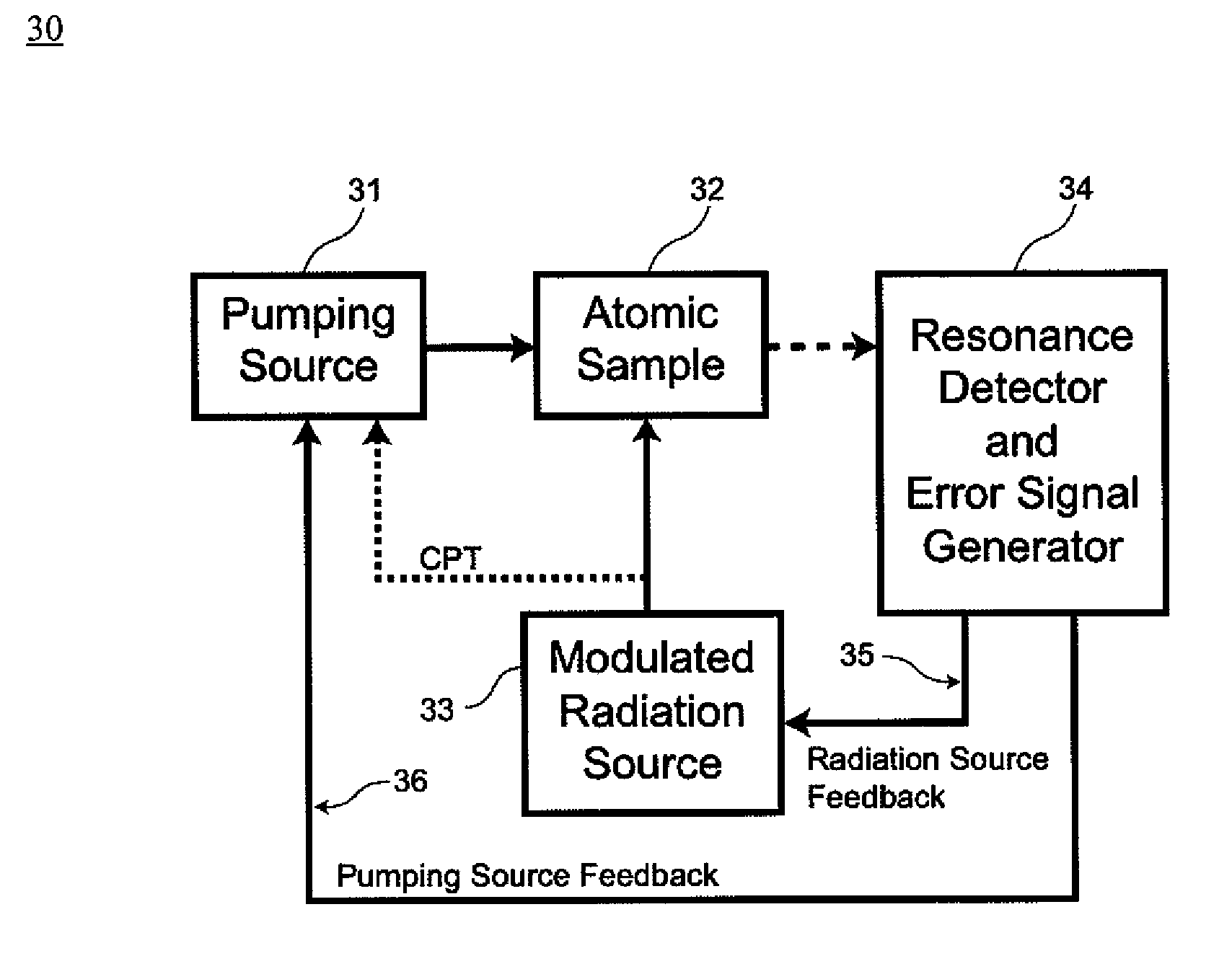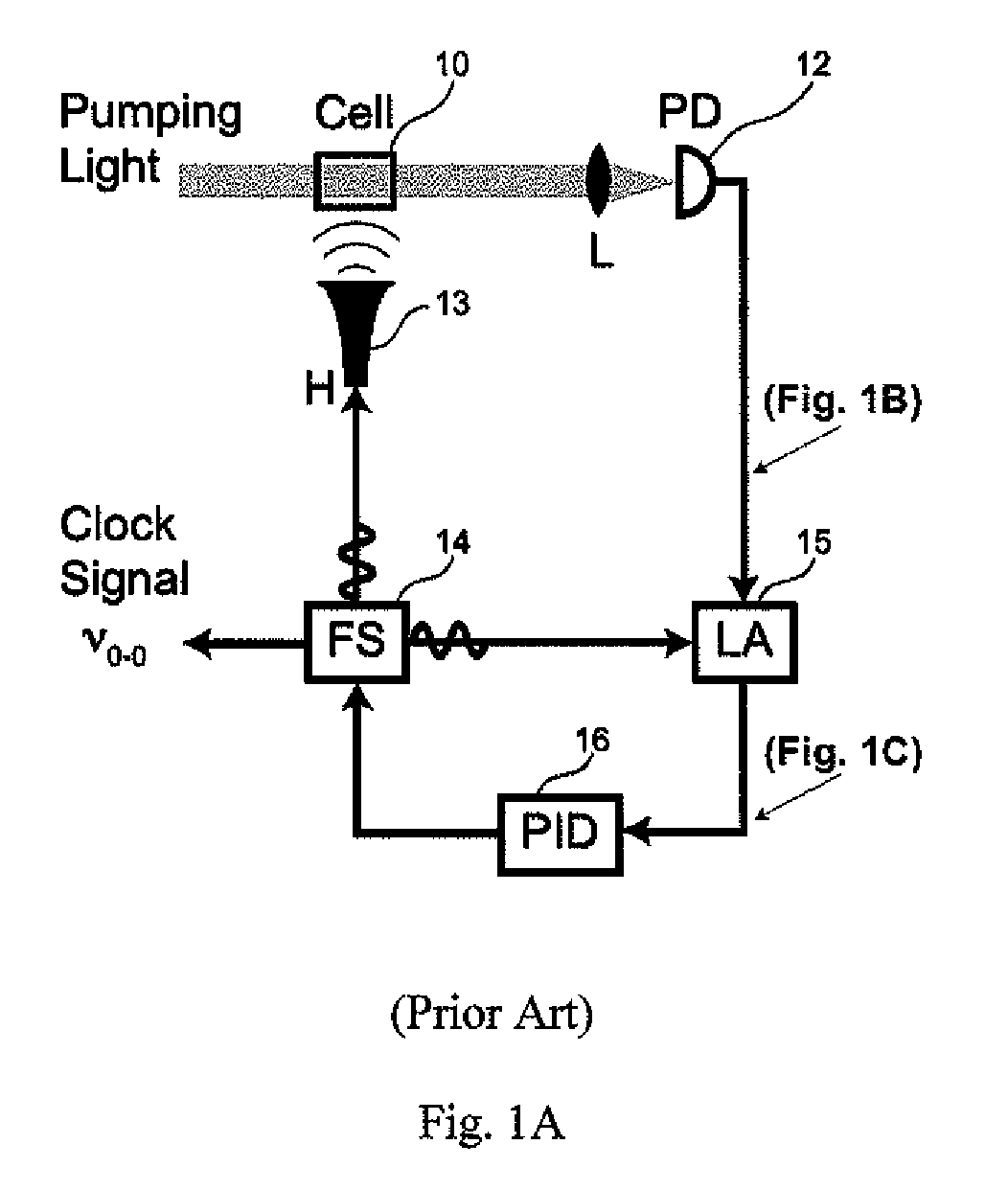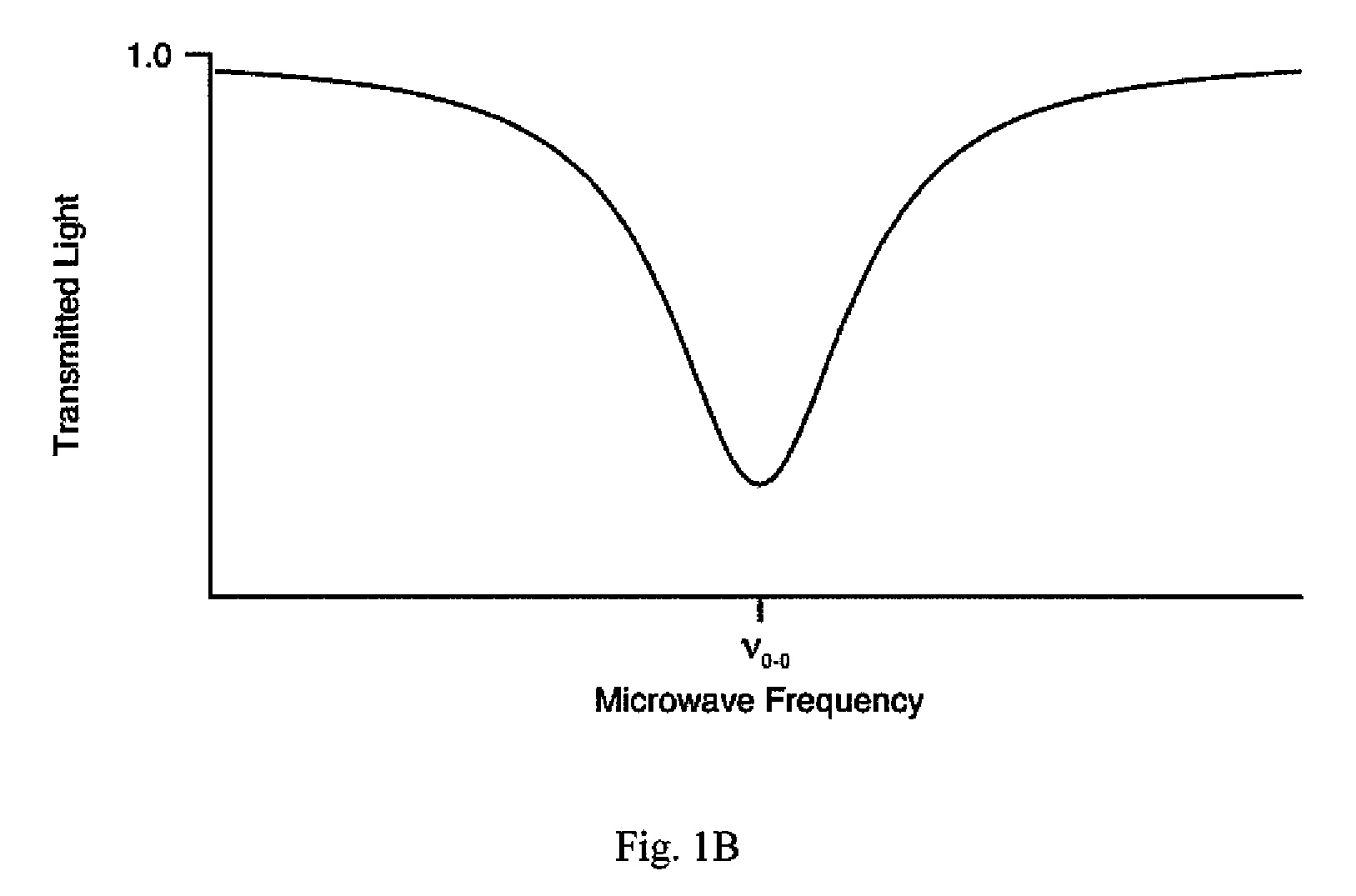Method for suppressing light shift in optical pumping systems
a pumping system and light shift technology, applied in the field of optical pumping, can solve the problems of noise, drift, clock frequency offset, and conventional clocks still experience clock frequency errors, and cannot eliminate light shift, etc., to suppress or eliminate light shift
- Summary
- Abstract
- Description
- Claims
- Application Information
AI Technical Summary
Benefits of technology
Problems solved by technology
Method used
Image
Examples
Embodiment Construction
[0040]Reference will now be made in greater detail to embodiments of the invention, examples of which are illustrated in the accompanying drawings. Wherever possible, the same reference numerals will be used throughout the drawings and the description to refer to the same or like parts.
[0041]FIG. 2 is a flow diagram of a method for suppressing light shift in an optical pumping system 20. In block 21, an atomic sample of an optical pumping system is pumped by a pumping source in an optical pumping system. Examples of optical pumping systems include atomic clocks, atomic magnetometers, masers, spectroscopy systems associated with optical pumping, and other atomic systems associated with optical pumping. Examples of atomic samples include atomic vapor cells, atomic beams, and atom traps. An example of a pumping source is a laser. In block 22, atomic resonances are excited with a modulated radiation source. Examples of modulation methods include frequency or phase modulation methods. Ex...
PUM
 Login to View More
Login to View More Abstract
Description
Claims
Application Information
 Login to View More
Login to View More - R&D
- Intellectual Property
- Life Sciences
- Materials
- Tech Scout
- Unparalleled Data Quality
- Higher Quality Content
- 60% Fewer Hallucinations
Browse by: Latest US Patents, China's latest patents, Technical Efficacy Thesaurus, Application Domain, Technology Topic, Popular Technical Reports.
© 2025 PatSnap. All rights reserved.Legal|Privacy policy|Modern Slavery Act Transparency Statement|Sitemap|About US| Contact US: help@patsnap.com



